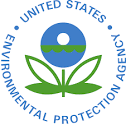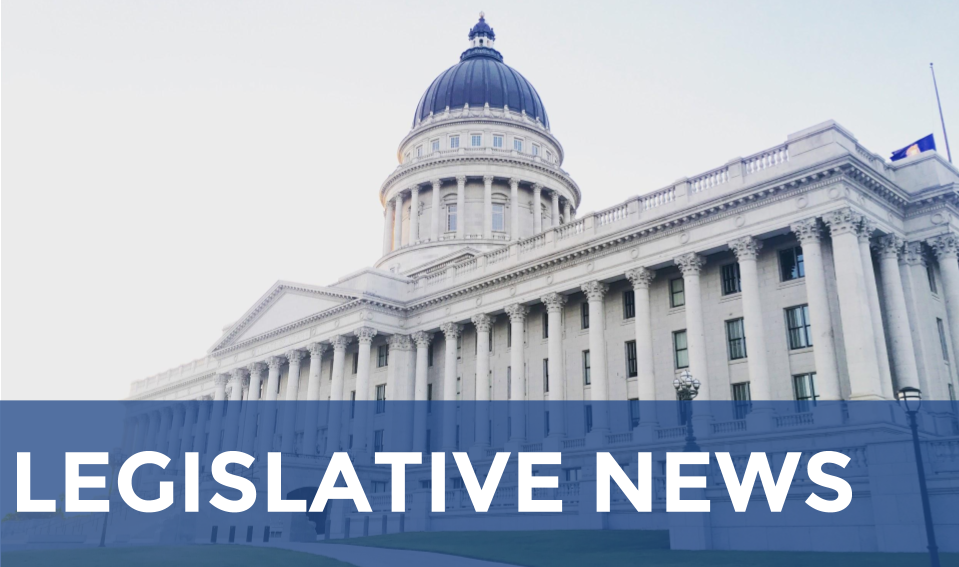Bill Introduction Deadline: All 2020 Legislation Now in Print
 The deadline for bills to be introduced in the 2020 Legislative Session was February 21. In total, 2310 bills were introduced by the Senate and Assembly in January and February for consideration in the 2020 legislative session. The next big legislative deadline is the House of Origin policy committee deadline on April 24. Nearly all of the bills introduced this year will need to be heard in their respective policy committees before the April 24 deadline in order to be eligible to continue moving. Accordingly, it will be a busy few months as we begin engaging with the legislature on bills of interest to the wastewater community.
The deadline for bills to be introduced in the 2020 Legislative Session was February 21. In total, 2310 bills were introduced by the Senate and Assembly in January and February for consideration in the 2020 legislative session. The next big legislative deadline is the House of Origin policy committee deadline on April 24. Nearly all of the bills introduced this year will need to be heard in their respective policy committees before the April 24 deadline in order to be eligible to continue moving. Accordingly, it will be a busy few months as we begin engaging with the legislature on bills of interest to the wastewater community.
The CASA State Legislative Committee will meet on Friday, March 13 in Sacramento to discuss around 50 newly introduced bills of interest. Among the new measures we will be discussing as high priority items is SB 1052 (Hertzberg), the bill we are co-sponsoring with the California Coastkeeper’s Alliance to allow wastewater agencies to voluntarily accept dry weather runoff and stormwater diversions. We will also be reviewing and taking positions on a variety of other important legislation relating to local government fees, constituents of emerging concern (CEC’s), public safety power shutoffs, microplastics management, biomethane, and much more. Stay tuned for a subsequent edition of CASA Connects where we will discuss the various proposals we are working on in further detail, and which will include a full list of 2020 bill positions that will be available following the March 13 SLC meeting.
Ocean Protection Council Adopts Strategic Plan
 On February 26, the Ocean Protection Council (OPC) approved its Strategic Plan to Protect California’s Coast and Ocean for 2020-2025. The plan establishes an ambitious vision for protecting California’s coast and ocean along with some specific objectives, targets and actions. Pertinent to our members with wastewater facilities along the coast, Target 1.2.3 directs the OPC to, “By 2022, based on the latest scientific results, establish interim goals as needed for significantly reducing nutrient loading and/or phasing out coastal wastewater discharge into the ocean. Work with partners to achieve a goal of 80-90% of coastal wastewater recycling that can be put to beneficial use by 2040.”
On February 26, the Ocean Protection Council (OPC) approved its Strategic Plan to Protect California’s Coast and Ocean for 2020-2025. The plan establishes an ambitious vision for protecting California’s coast and ocean along with some specific objectives, targets and actions. Pertinent to our members with wastewater facilities along the coast, Target 1.2.3 directs the OPC to, “By 2022, based on the latest scientific results, establish interim goals as needed for significantly reducing nutrient loading and/or phasing out coastal wastewater discharge into the ocean. Work with partners to achieve a goal of 80-90% of coastal wastewater recycling that can be put to beneficial use by 2040.”
Along with WateReuse, BACWA, and SCAP, CASA submitted written comments and testified at the adoption hearing on February 26 requesting changes to this language to address concerns about an unachievable ocean discharge mandate and tying ocean discharge to ocean acidification in advance of scientific consensus. While the OPC did not accept the changes that CASA requested, senior staff from the OPC and the State Water Board assured stakeholders that the requested language was equivalent to what was being contemplated as part of the State Water Board’s Recycled Water Policy, and so the requested changes were unneeded. As you may recall, CASA collaborated with the OPC in the past on our microplastics legislation (SB 1263), and we’ll continue to work alongside them as they are carrying out the efforts associated with the Strategic Plan over the next 5 years. If you have any questions about the plan’s contents and other features, please reach out to Jared Voskuhl.
New California Air Toxic Emissions Requirements Result in Unrealistically High Assessment of POTW Risk
 The adoption of AB 617 – Criteria Pollutant and Toxics Emissions Reporting(2017) gave California Air Resources Board (CARB) regulatory authority over stationary sources, historically under the purview of local Air District’s, and requires the preparation of a harmonized, statewide strategy to monitor, report and reduce emissions of toxic air contaminants and criteria pollutants in communities affected by a high cumulative exposure burden. It requires that CARB work with local Air Districts to identify, report and further reduce health risks throughout California.
The adoption of AB 617 – Criteria Pollutant and Toxics Emissions Reporting(2017) gave California Air Resources Board (CARB) regulatory authority over stationary sources, historically under the purview of local Air District’s, and requires the preparation of a harmonized, statewide strategy to monitor, report and reduce emissions of toxic air contaminants and criteria pollutants in communities affected by a high cumulative exposure burden. It requires that CARB work with local Air Districts to identify, report and further reduce health risks throughout California.
Perhaps the most significant element of this effort is the proposed update to the AB 2588 Air Toxic “Hot Spots” Program. Recently CARB, in coordination with the Office of Environmental Health Hazard Assessment (OEHHA), identified a list of over 800 compounds for potential inclusion into the AB 2588 program (in addition to the existing list of over 600 compounds). Many of the proposed compounds do not have test methods or toxicity factors, so it is unclear how such a proposal will be implemented. What we do know is that these programs (AB 617 and AB 2588) will unduly increase the calculated cancer risk from wastewater treatment plants and many other facilities.
Fortunately CARB staff have agreed that the wastewater sector should not be required to monitor, test, or report for all compounds referenced in the CTR. CASA has agreed to help develop an approach for determining a short-list of compounds relevant to the wastewater sector and a proposal for updating emission factors.
As proposed, this new reporting program under AB 617 will greatly expand the number of toxic compounds that must be reported and publicly posted on CARB’s Pollution Mapping Tool website. While testing is not required, reporting of toxic emissions for up to 800 new toxic compounds could be required. This is despite the fact that toxicity values are outdated and not relevant to today’s water reclamation facilities. Actual testing, if even possible, is cost prohibitive which makes using the existing but outdated values appealing. The net effect:
- The list of reportable compounds could be expanded drastically.
- Concentrations of reported toxic compounds can be greatly exaggerated without real test data.
- Reporting of exaggerated toxic emissions is likely to trigger the preparation of complex and expensive cancer risk assessments and the resulting cancer risk would be reported to surrounding communities.
If you have any questions or comments please contact Sarah Deslauriers or Greg Kester.
National Water Reuse Action Plan
 On February 27, the U.S. Environmental Protection Agency (USEPA) announced the unveiling of the National Water Reuse Action Plan: Collaborative Implementation (Version 1) (Action Plan). The purpose of the plan is to outline how USEPA, in coordination and collaboration with its federal, state, and stakeholder partners, will enhance the resiliency and security of the nation’s water resources by promoting and utilizing reuse practices and approaches. The Action Plan describes thirty-seven collaborative actions between the federal government and state and stakeholder entities, along with developed implementation plans and target milestone and completion dates for each of the actions. USEPA Administrator Andrew Wheeler explained that USEPA and its federal partners “pledge to continue to lead and facilitate implementation of the Action Plan with state, tribal, and local partners, recognizing that long-term implementation will continue to adapt and evolve through robust collaboration.”
On February 27, the U.S. Environmental Protection Agency (USEPA) announced the unveiling of the National Water Reuse Action Plan: Collaborative Implementation (Version 1) (Action Plan). The purpose of the plan is to outline how USEPA, in coordination and collaboration with its federal, state, and stakeholder partners, will enhance the resiliency and security of the nation’s water resources by promoting and utilizing reuse practices and approaches. The Action Plan describes thirty-seven collaborative actions between the federal government and state and stakeholder entities, along with developed implementation plans and target milestone and completion dates for each of the actions. USEPA Administrator Andrew Wheeler explained that USEPA and its federal partners “pledge to continue to lead and facilitate implementation of the Action Plan with state, tribal, and local partners, recognizing that long-term implementation will continue to adapt and evolve through robust collaboration.”




 @CASA_CleanWater
@CASA_CleanWater